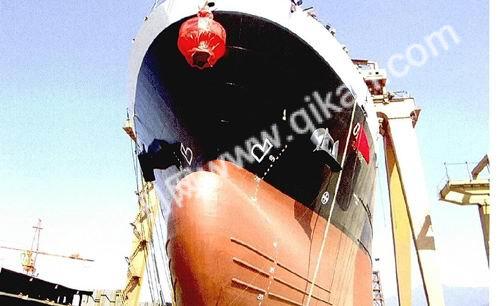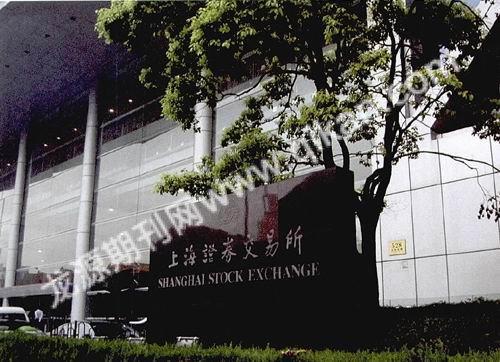News Briefs
2009-10-12
China allocates 75 mln yuan to continue dairying subsidies
Chinas Ministry of Finance said on August 3 that it is to continue subsidizing dairy companies loan interest payments to the tune of 75 million yuan (USD 10.97 million), in a move to help them cut costs and protect the interests of dairy farmers.

The measure covers the interest on loans taken out by dairy companies to purchase raw milk from farms because of the melamine contamination scandal last year, the ministry said.
The ministry unveiled the subsidies policy in September 2008 following the contamination problems. It took effect from October to December last year, and was then extended into March this year. On July 27, the policy was further extended to year end to support dairy producers.
The subsidy covers 3.11 percentage points of the loan interest rate, the ministry said on July 27.
The countrys dairy industry last year slumped after milk powder produced by Sanlu Group was contaminated by melamine, which killed six children and resulted in more than 300,000 others becoming ill.
Chinas auto sales surpass 1.08 mln units in July
Sales of Chinas domestically-made automobiles totaled 1.09 million units in July, up 63.57 percent compared with the same period of last year, the China Association of Automobile Manufacturers (CAAM) said on August 7.
It was the fifth month in a row that saw auto sales exceed one million units, CAAM said in the statement.
Over the January-July period, sales of domestically made autos stood at more than 7.18 million units, up 23.38 percent year on year, according to CAAM. The country produced more than 7.10 million units, up 20.23 percent.
The increase in July sales was boosted by surge in sales of passenger cars, which jumped 70.54 percent from a year earlier to 832,600 units in July, CAAM said in the statement.
From January to July, sales of passenger cars hit 5.37 million units, up 30.91 percent from the same period of last year. A total of 5.27 million units of passenger cars were produced in the first seven months.
CAAM said the surge in sales was boosted by the improvement in the countrys economy and the governments policies to stimulus car purchase. China cut the purchase tax on passenger cars to 5 percent for models with engine displacements of less than 1.6 liters.
In the first half of this year, auto sales reached 6.099 million units. The association said in early July that it was “cautiously optimistic” about the auto sales on the domestic market in the second half of this year, predicting that China was expected to sell more than 11 million vehicles in 2009, higher than earlier prediction of 10.2 million vehicles.

Chinas leading shipbuilder CSSC net profit down 38.4% in H1
China CSSC (China State Shipbuilding Corp.) Holdings Ltd., the countrys leading shipbuilder, announced on August 6 that it had made a net profit of 1.2 billion yuan (USD 175.6 million) in the first half of the year, down 38.42 percent year on year.
Net assets profitability ratio was 9.53 percent in six months, declining by 10.25 percentage points year on year, due to waning demands and rising material prices, said the company in its half-year report to the Shanghai Stock Exchange.
The Shanghai-listed firms shares had plummeted 6.76 percent to 92.96 yuan (USD 13.6) a share on August 7 before the release of the report.
China drafts regulation on monopoly price
Chinas top economic planner, the National Development and Reform Commission, unveiled a draft regulation on monopoly prices on August 12.
The regulation applies to cases of monopoly prices both inside and outside the country, when monopoly prices outside the country impact the domestic market, according to the regulation posted on the commissions Website.
Other than deals reached among more than two parties for the purpose of monopolizing prices, power abuse of government agencies to eliminate or limit competition is also regarded as violation of the regulation.
Those who violate the regulation would be punished according to stipulations in the countrys anti-monopoly law, according to the commission.
Individual retailers or producers may face confiscation of illegal earnings and a fine of up to 10 percent of last years sales, while industry associations are subject to a fine of no more than 500 thousand yuan (USD 73.5 thousand) or could be dismissed as an association.
Government agencies that violate the regulation would be ordered by their superiors to correct their actions, and officials held responsible would be disciplined according to relevant laws.
The commission said the regulation was aimed to prevent monopoly prices and to endorse fair competition so as to safeguard the interests of consumers and the public.
The commission is soliciting public opinion for the regulation until September 6.
China urges efforts to support development of small, medium-firms
China called for more policy assistance and financial support to encourage the development of small and medium-sized enterprises (SMEs) on August 19.
Attendees at a State Council executive meeting, chaired by Premier Wen Jiabao, agreed that promoting the sound development of the SMEs was of great importance to maintain economic growth and social stability.
The government would exert more efforts to improve the policy and law system to create a more open and fair competition environment for SMEs.
Measures would be taken to help SMEs tackle financing difficulties, and the establishment of the Growth Enterprise Market (GEM), the countrys first Nasdaq-style market, would speedup helping small companies raise fund.
The central government would also increase funding to support the SMEs, especially in sectors such as technological innovation, industrial structure adjustment and employment.
The government would pick some SMEs to participate in the countrys subsidized purchasing program of home appliances, agricultural machinery and automobiles in rural areas as well as the auto, home appliance replacement program.
Attendees at the meeting demanded better services for SMEs and support to promote technological progress and structure adjustment in SMEs.
They also reviewed and approved draft regulations on national body-building and on the administration of joint-venture establishment of foreign companies or individuals in China. Both regulations would be released to public after further revision.
China becomes Japans largest trading partner in first half of 2009
China becomes Japans biggest trading partner in both exports and imports in the first six months this year, as the global economic downturn affected Japan-U.S. trade more seriously, the Japan External Trade Organization (JETRO) said on August 19.
Exports to China fell 25.3 percent from a year earlier to 46.5 billion US dollars and imports from the country dropped 17.8 percent to 56.2 billion US dollars, however, trading with other countries and regions including the United States showed larger declines, JETRO said in its report.
It is the first time exports to China surpassed those to the United States.
In the January-June period, the trade with China accounted for 20.4 percent of the total trade volume of Japan, while that with the United States accounted for 13.7 percent and that with South Korea 6.1 percent.
JETRO also projected a decline of Sino-Japanese trade for the whole year of 2009, the first yearly contraction since 1998 Asian financial crisis.
Chinas industrial profit down 17.3% in first seven months
Industrial enterprises in 22 Chinese provinces, regions and municipalities generated 1.11 trillion yuan (USD 163 billion) of profit in the first seven months, down 17.3 percent from the same period last year, according to the latest official figures.
The decline is 3.8 percentage points lower than that in the first six months, the National Bureau of Statistics (NBS) said in a statement on August 28.
The revenues gathered by the industrial companies core businesses reached 21.4 trillion yuan (USD 3.13 trillion) in the first seven months, up 0.9 percent from last year. The growth rate is 0.5 percentage points higher than that in the first six months.
Of the 39 industrial sectors, 14 achieved a rebound in profit growth, nine recorded a slow-down in profit declines and four turned slumping profit to rebounding profit.
The 22 regions refer to Chinas provinces, regions and municipalities minus Beijing, Inner Mongolia Autonomous Region, Hunan, Guangdong, Anhui, Hainan, Chongqing, Yunnan and Tibet Autonomous Region.
The NBS used to publicize national industrial profit every two months, but began to issue the information monthly to improve monitoring frequency on economy this year. Only 22 provinces, regions or municipalities now provide monthly industrial profit data.
China extends anti-dumping duties on phthalic anhydride
The Chinese Ministry of Commerce said on August 31 it would extend anti-dumping duties on phthalic anhydride imported from the Republic of Korea, Japan and India for another five years after review investigation.
Phthalic anhydride is an important industrial chemical mainly used in the mass production of plasticizers for plastics
The imported phthalic anhydride would cause damage to Chinese industries should anti-dumping duties be lifted, said the ministry.
The duties took effect as of August 31.
On January 7, China imposed anti-dumping measures on phthalic anhydride to offset negative impact on domestic producers.
China adjusts import tariffs policy to encourage innovation
Chinas government is adjusting its policies on imported technological equipment with the purpose of boosting domestic innovation and greater industrial restructuring and upgrading.
Key components and raw materials imported by domestic enterprises for manufacturing major technological equipment and products are exempted from import tariffs and value-added tax (VAT) as of July 1 this year, according to a joint communiqué issued by the Ministry of Finance and five other ministries on September 4.
Tariff exemption for imported complete set of machinery and equipment will be revoked, according to the communiqué.
To ensure smooth transition, preferential policies for items which currently can not be wholly supplied domestically, if it is proved so after examination, will be phased out gradually.
Major State-backed key technological equipment includes clean energy power generating systems and nuclear power generating units of above a million kilowatts.
Chinas central government in March announced expenditure of 20 billion yuan (USD 2.94 billion) for this year, from a 908 billion yuan (USD 132.96 billion) public sector budget, to help enterprises upgrade technology, energy efficiency and innovation.
It also unveiled a three-year plan in May to stimulate equipment-manufacturing industry, which lacks ability to innovate and had underdeveloped technology.
But experts said lack of funding and cooperation among research institutes still restrain Chinas technological transition.
Shanghai seeks sustainable economic gains with restructuring
“Shanghai is prioritizing its economic structure to achieve sustainable gains in the citys economic growth”, said a vice mayor of Shanghai on September 6.
The city is prepared to sacrifice a bit of economic growth if necessary, Vice Mayor Tu Guangshao told a financial forum on September 3.
Shanghais economy grew in the second quarter, pushing the growth rate in first half of 2009 to 5.6 percent after a sluggish gain of 3.1 percent in the first quarter. However, Shanghai lagged behind some cities in terms of the first half economic growth.
“Shanghai has a more urgent need and a more difficult task to adjust its economic growth than other places,” Tu was quoted as saying by the English newspaper.
Shanghai, which traditionally is an industrial city, is gearing up to be a city boasting modern services and an advanced manufacturing sector, he said.
The State Council in April issued a directive to build Shanghai into a global financial and shipping center by 2020. The municipal government has framed implementation policies to facilitate the task.
It has allocated 10 billion yuan (USD 1.46 billion) to help industrialize scientific and research programs as part of the structural upgrading.
Tu called for support from financial institutions to smooth industry consolidation by granting more loans to companies undergoing merger and acquisition activities.
Financial institutions should help build Shanghai into an international trade center by planning and developing trade-related financial services such as yuan settlement programs, he said.
Tu said there has been encouraging improvement in the citys loan structure since the start of this year, as loans granted to the service sector, individuals and small- and medium-sized enterprises increased.
China has more than 2,000 registered express mail firms by August
The number of registered express mail service companies in China surpassed 2,000 by the end of August, Chinas State Post Bureau (SPB) said on September 7.
The industry employed more than 400,000 staff members and reported an annual business revenue more than 50 billion yuan (USD 7.32 billion), according to the bureau.
Governmental figures showed that the combined business revenue of express mail service firms rose 23.1 percent in July from a year earlier to 4.19 billion yuan (USD 613.53 million) across the country.
An Ding, Director General of the Department of Market Supervision and Inspection under the SPB, said Friday despite the rapid growth of the domestic express mail market, there still remained problems including low-quality services and low threshold of market access that needed to be addressed.
杂志排行
中国经贸聚焦·英文版的其它文章
- Niu Gensheng Resigned from Mengniu’s President
- Jiang Hongkun Appointed as Party Secretary of Suzhou
- He Tao Became the President of Bailian Group
- Huang Guangyu Excessive Assets Sealed by Hong Kong Court
- The Philippines:Your Absolute Choice Chosen Absolutely
- The Philippine Pavilion at the Shanghai World Expo 2010:Performing Cities
